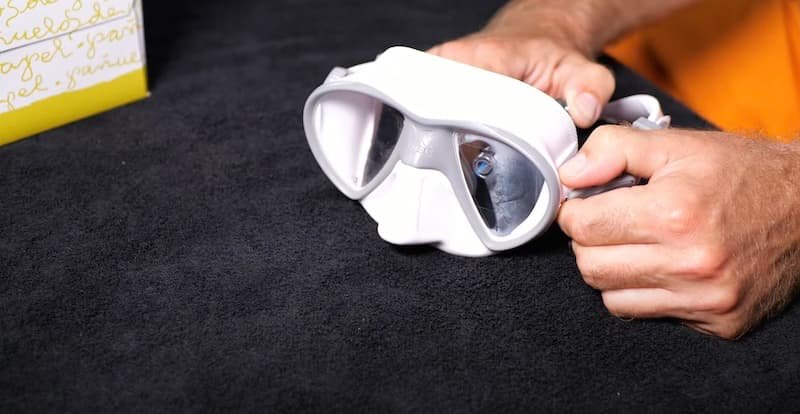
 Nick Pelios
Freediver, Creator
Nick Pelios
Freediver, Creator

 Nick Pelios
Freediver, Creator
Nick Pelios
Freediver, Creator
If you've ever struggled with a foggy mask while freediving, you're in the right place. In today's blog post, we'll walk you through a simple and efficient method to ensure a clear view underwater, courtesy of Atlantis Freediving.
When you purchase a new mask, it often comes with a thin layer of silicone on the inside of the lenses. This layer, applied during the manufacturing process, can cause fogging. The key is to remove this silicone layer to prevent fogging during your dives.
Tools You'll Need: Freediving mask, lighter (preferably with a dispersed flame), tissues.

Identify Your Mask Material: Check if your mask is suitable for this method. Freediving masks with lenses made of tempered glass can undergo this process. Plastic lenses may have a special film and should not be treated with fire.
Prepare Your Tools: Have your mask, a lighter, and tissues ready. A dispersed flame lighter is recommended to avoid leaving residue on the mask.
Heat Treatment: Apply a small amount of heat to the inside of the lenses using the lighter. Be cautious not to heat the plastic frame on the outside. The goal is to burn off the silicone layer causing fogging.
Clean Residue: Use a tissue to gently clean the inside of the lenses. A dispersed flame lighter leaves no residue, ensuring a clean and clear surface.
Repeat for Both Lenses: Perform the same process for the other lens, ensuring thorough removal of the silicone layer.
Check for Fogging: Exhale into the mask and observe. The treated lens should remain clear, while the untreated one may still fog.
Additional Tips: If fogging persists, you can use your saliva as an anti-fog solution. Spit on the inside of the lenses, spread it with your finger, dip the mask in water, and gently rinse off excess saliva. Before diving, wash your face with cold seawater to cool down your skin and prevent fogging.
Congratulations! You've successfully learned how to defog your mask for freediving. With these simple steps, you can ensure a crystal-clear view underwater, allowing you to fully enjoy your diving experience. Remember, this technique works well for most masks but always refer to your mask's manual for specific instructions.